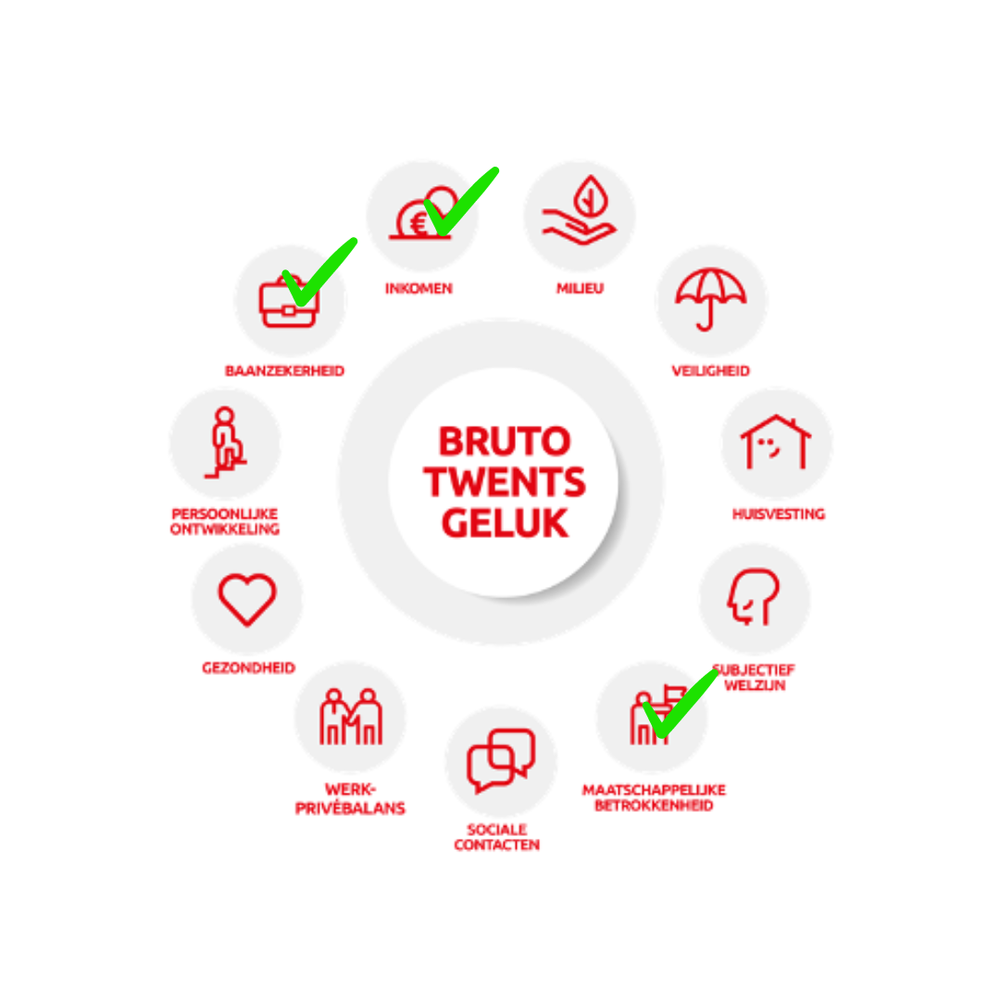Cross-border Statistics
Effective collaboration requires knowing one another and understanding the issues and interests of your partners. This is particularly true for cross-border cooperation between Eastern Netherlands and the German Münsterland. To support this knowledge, the project is developing a website called "Grenslandmonitor 2.0." The monitor provides an objective foundation for meaningful discussions on the challenges facing our region.
The monitor provides an objective foundation for meaningful discussions on the challenges facing our region. In the future, the Grenslandmonitor can also be expanded to include multiple themes from the broad well-being perspective, which Twente uses as a foundation for enhancing Gross Twents Happiness. Even in the preliminary phase of this project, it became clear that making similar information accessible on both sides of the border and using it fosters dialogue and mutual understanding—this alone is a valuable outcome of the project.
Funding
Regio Deal
Want to know more?
Contact project leader Edwin van de Wiel
T: +316 212 74 070
M: e.vandewiel@kennispunttwente.nl
Read more about Cross-Border Statistics in our progress report

Opportunities for region by collecting and sharing information with Germans
Twente’s location presents opportunities for cross-border collaboration. German companies have branches here, Dutch entrepreneurs do business across the border, live or work in Germany, and students in schools choose German as a subject, while Germans come to study Dutch. Simply looking around, you can see Germans coming to shop in Twente, and in German kitchen showrooms, you’ll almost hear more Dutch than German being spoken.
In short, the exchange is there, but to develop, monitor, and evaluate policies based on this, concrete information is needed. “With the Grensstatistiek project, we ensure that data is collected and make this information accessible for policymakers,” explains René Bogaarts, project leader and German coordinator for the Municipality of Enschede. “In the first phase of the project, we collected existing data on, for instance, population and employment and presented it in visualisations, making the figures come alive. It’s remarkable to see what an employment trend chart can do in a room filled with bi-national representatives. Conversations about developments and differences arise spontaneously. In the second phase, which we are now entering, other data will also be included.”
During a conference attended by representatives from the Netherlands and Germany, the types of data needed most were identified. “More than 100 indicators were suggested. We organised and consolidated these into four areas: economy, employment, education, and mobility/infrastructure. We’ll map out existing data from various sources in Germany and the Netherlands, such as CBS, the Environmental Assessment Agency, and their German counterparts. In some cases, additional data may need to be gathered or purchased.”
According to Bogaarts, policymakers can benefit greatly from all this data and the accompanying visualisations. “Are there trends emerging? Do the data support the policies we have in place? If there is a shortage of skilled workers in the Netherlands, there might well be a surplus just across the border in Germany. If not, then perhaps there’s a joint task for Dutch and German educational systems to address this issue. Teachers might be exchanged, and even more cross-border collaborations could arise, benefiting both countries and creating a strong border region.”
View the Border Monitor here: www.grenslanders.nl

Bruto Twents Geluk
Which indicators does the Grensstatistiek project contribute to?
✓ Income
✓ Job Security
✓ Community Engagement
